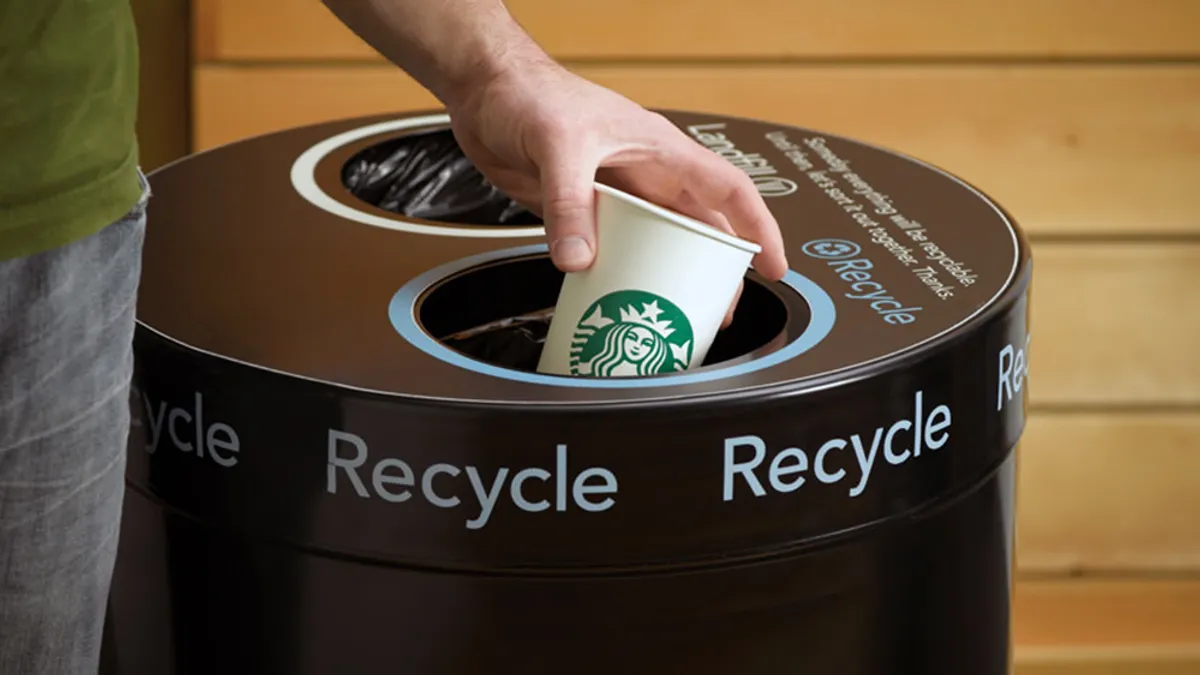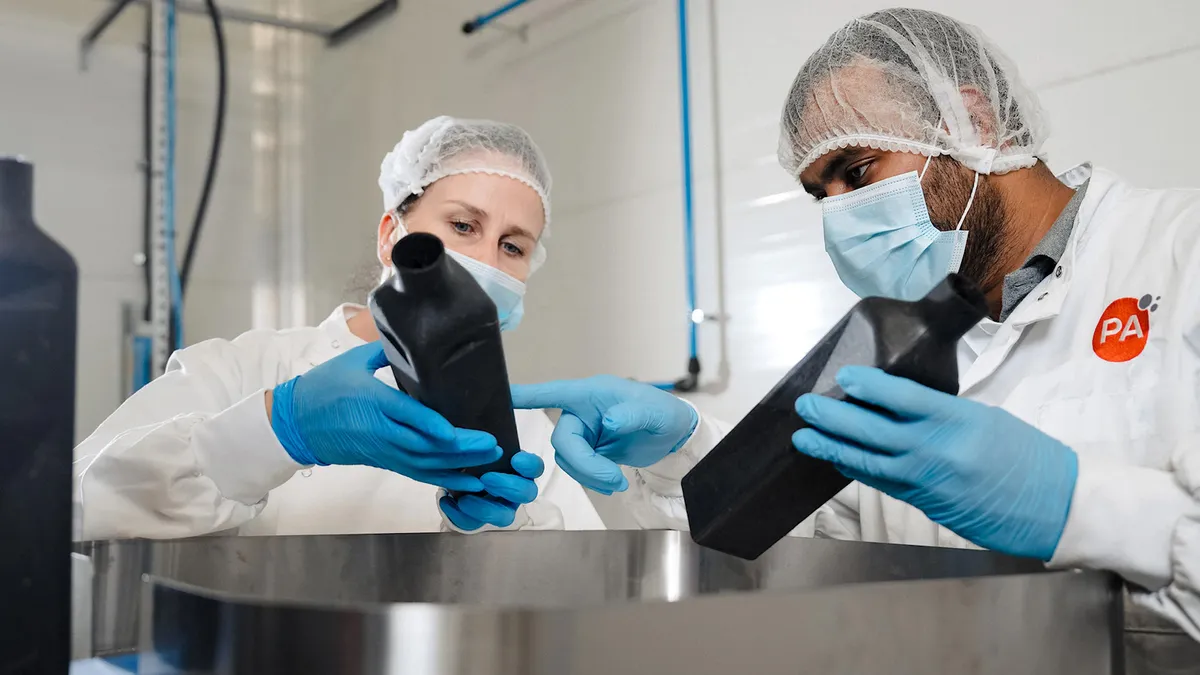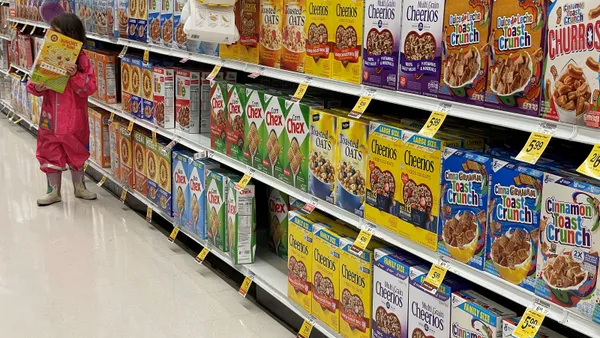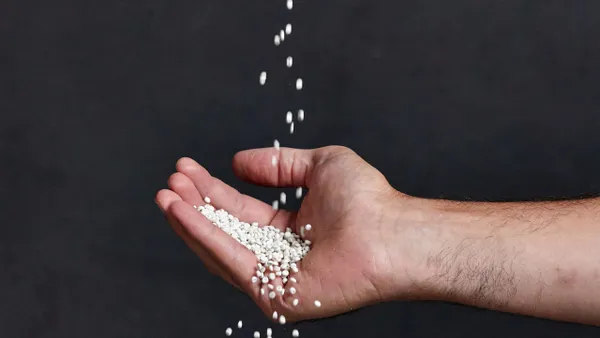Dive Brief:
- Starbucks met a target to have at least 20% recycled content in its hot cups by 2022 and is seeing an uptick in the amount of its materials that are reusable, recyclable or compostable, according to the company’s fiscal 2022 sustainability report released Thursday.
- Starbucks has permanently retired a goal to achieve 100% compostable and recyclable hot cups by 2022. Rather, it launched a “more sustainable” hot cup made with less paper and less plastic liner. “Recycling facilities in some parts of the country have a limited ability to process coated paper products and this creates challenges for community MRFs to have access to end markets for their recyclable materials,” according a company spokesperson.
- Due in part to pandemic disruptions, the company missed its 2022 targets to double the use of reusable cups from a 2016 baseline of around 1.4%. Just 1.2% of all beverages sold in FY22 were in reusable vessels — whether a customer’s personal cup, “for here” service ware or through a “borrow a cup” program.
Dive Insight:
Single-use items surged during the pandemic, translating to a period of backslide for reusable mugs and cups amid later-disproved concerns about virus exposure via surfaces. It’s been a difficult norm for food and beverage businesses to reverse.
Today, personal cups are accepted in-cafe at all of Starbucks’ U.S. stores, and the company is currently conducting its largest U.S. reusables test to date in 192 Colorado locations, according to Chief Sustainability Officer Michael Kobori. The company is testing personal cup acceptance for to-go orders, including drive-thru and mobile orders. Customers save 10 cents when using a personal cup and can earn rewards points.
The company is also working on light-weighting its packaging, reducing virgin plastic use and increasing recycled content, and it is continuing work with and invest in groups like Closed Loop Partners, the NextGen Consortium and Circular Services. This past November in some cities it released a lighter-weight, FSC-certified hot cup made with 30% postconsumer recycled fiber, which will roll out to the rest of stores through 2024, according to Kobori.
Packaging materials (in thousand metric tons)
| FY19 | FY21 | FY22 | |
| Total weight of packaging material | 389 | 387 | 400 |
| Percent of packaging made from recycled or renewable materials | 30% | 29% | 31% |
| Percent of materials recyclable, compostable or reusable | 45% | 46% | 49% |
| Direct: Total weight of packaging materials purchased by Starbucks | 259 | 270 | 267 |
| Indirect: Total weight of packaging materials purchased by licensees for Starbucks retail operations | 129 | 115 | 133 |
| Total weight of plastic packaging materials | 152 | 163 | 153 |
| Total weight of virgin plastic packaging materials | 144 | 154 | 136 |
| Percent reduction of virgin plastic packaging materials from FY19 baseline | 6% | ||
| Percent of plastic packaging that is reusable, recyclable or compostable | 18% | 18% | 25% |
| Percent of post-consumer recycled content used in plastic packaging | 5% | 5% | 7% |
The company has a host of 2025 goals in progress. It appears to be furthest behind on making all plastic packaging reusable, recyclable or compostable. As of FY22, 24.7% of all plastic packaging met that description. Overall, 49% of Starbucks packaging, by weight, was reusable, recyclable or compostable.
Other 2025 goals are to use 5% to 10% recycled content across all plastic packaging (FY22: at 6.3%) and reduce virgin plastic packaging by 20% from 2019 (FY22: down 6%).
Among its 2030 goals, Starbucks is aiming to cut its waste to landfill in half (including packaging that leaves stores) from a FY19 baseline. Operational waste sent to landfill rose 4.7% last year, which is to be expected as business grows, the company said. However, its waste diversion rate ticked up to 28% last year, which the company attributed to increased in-store recycling.















